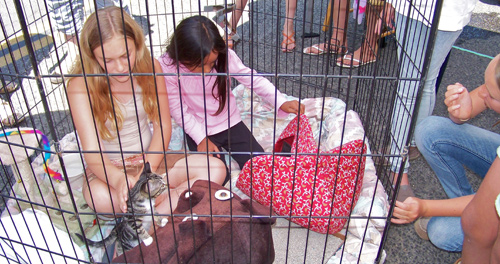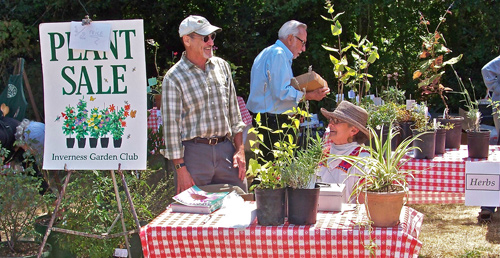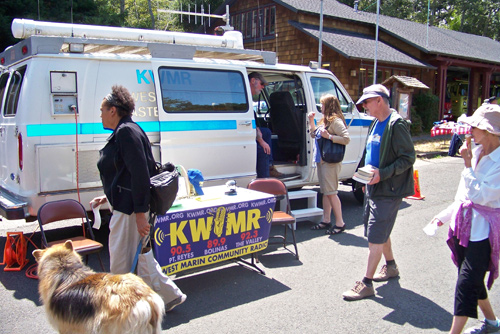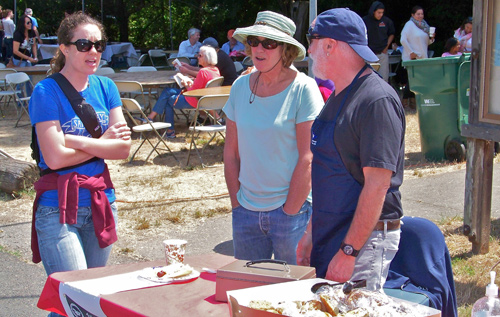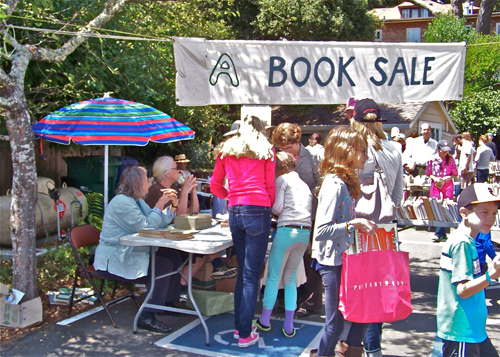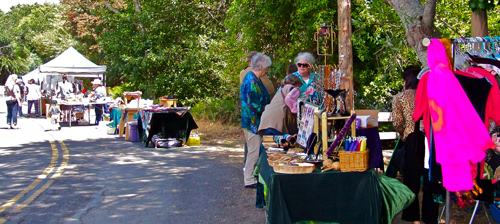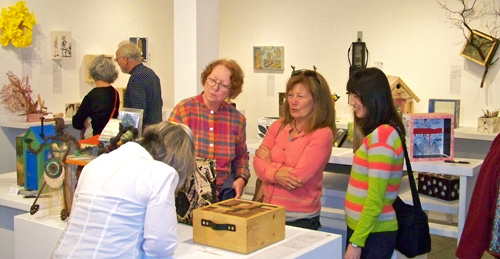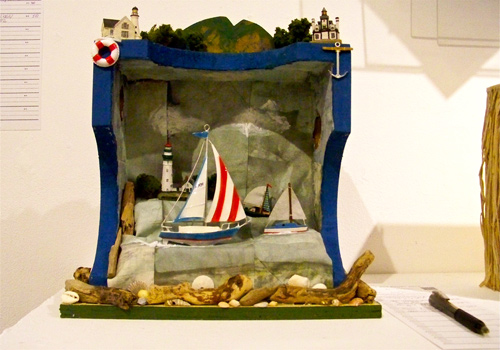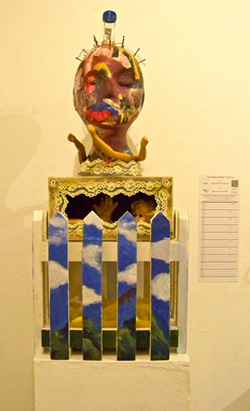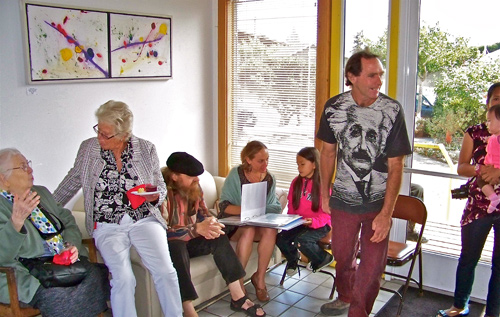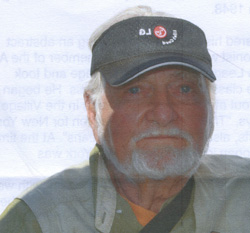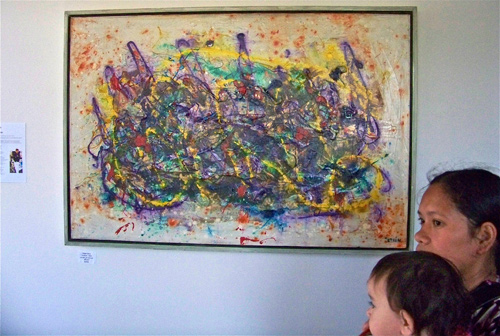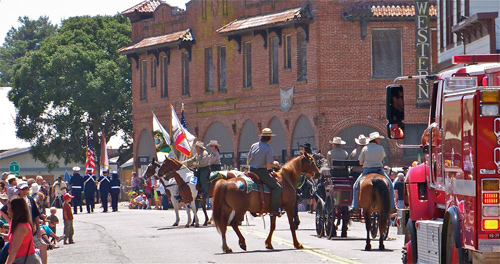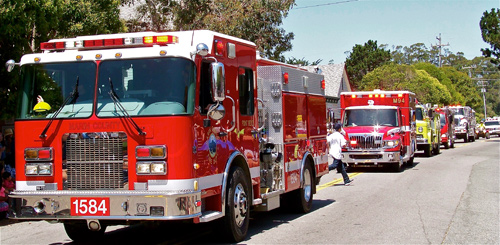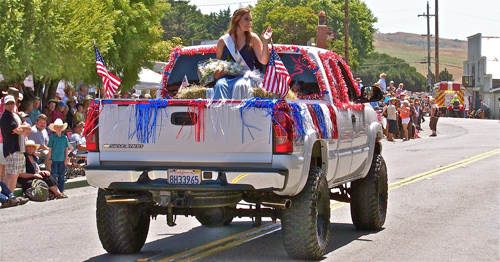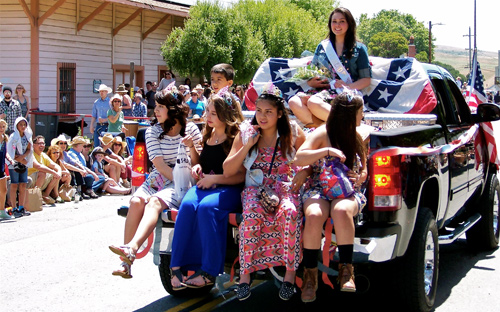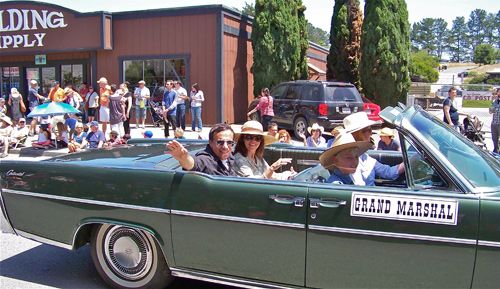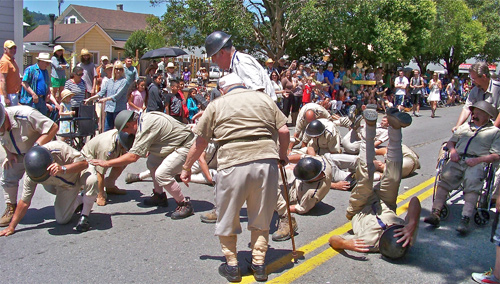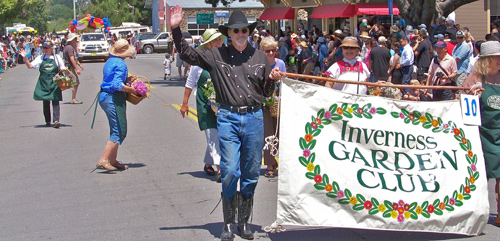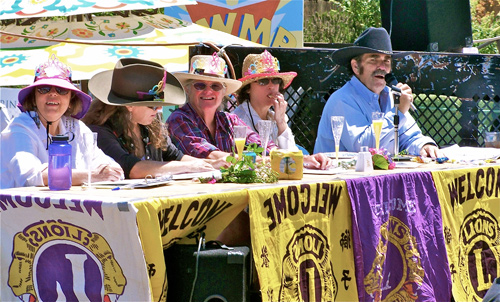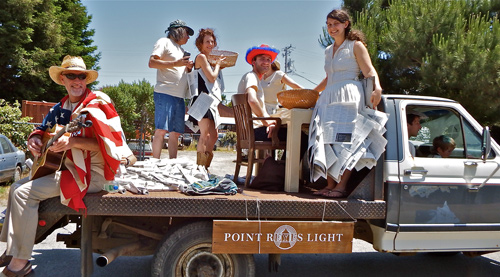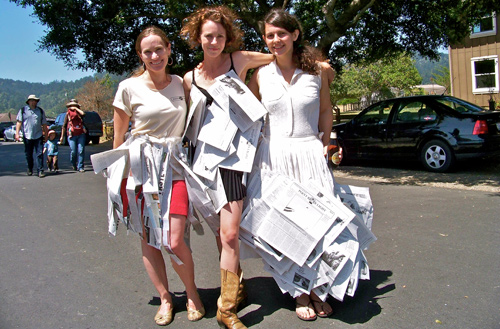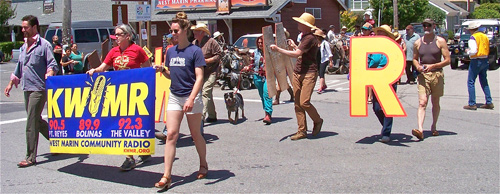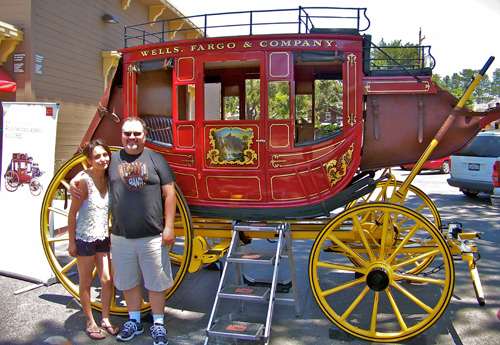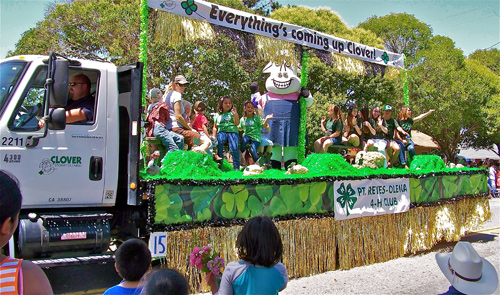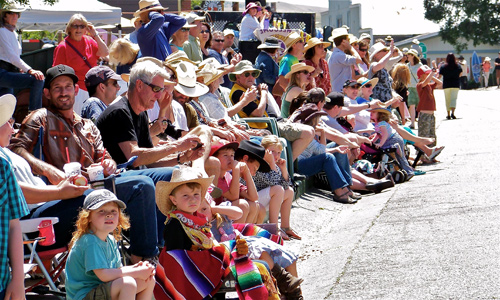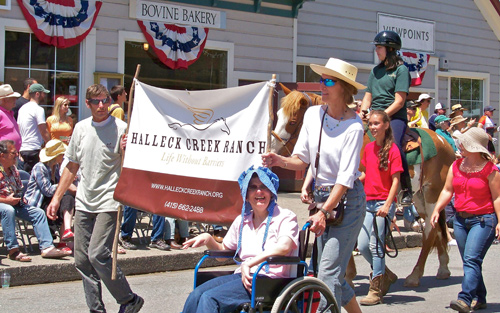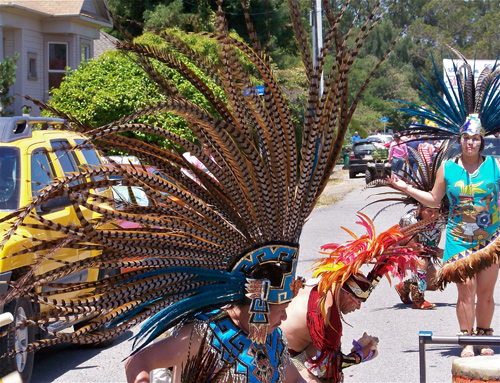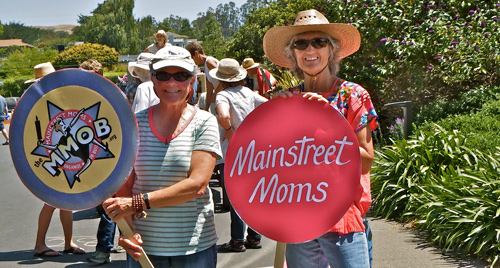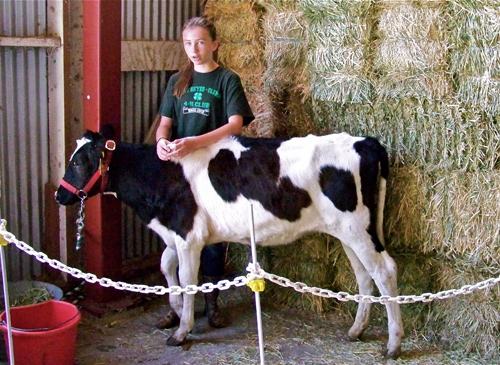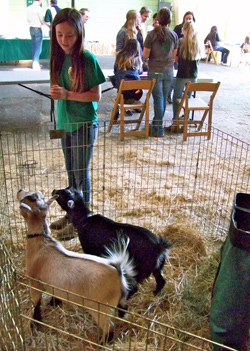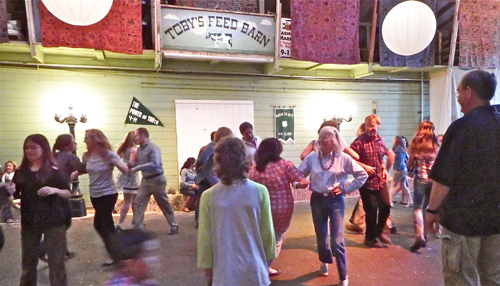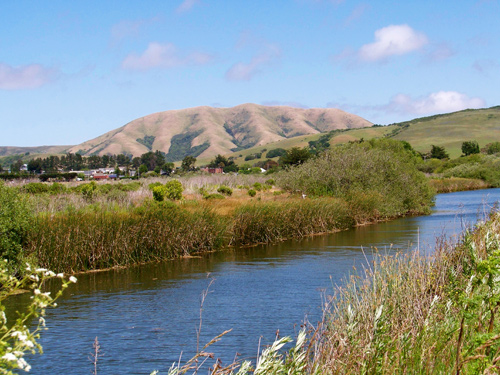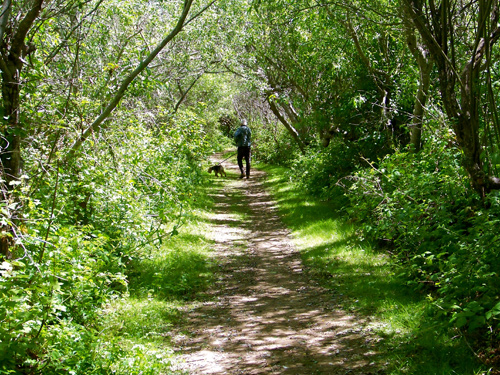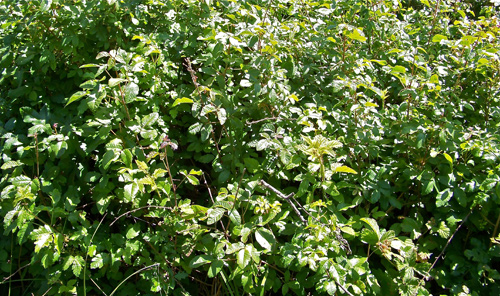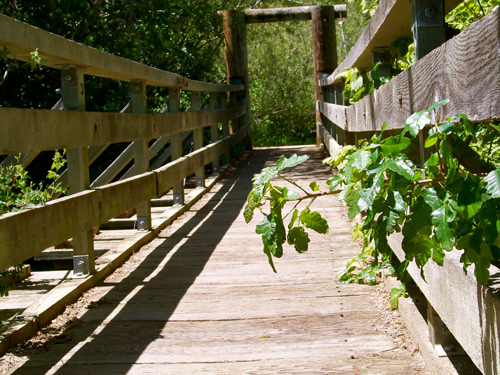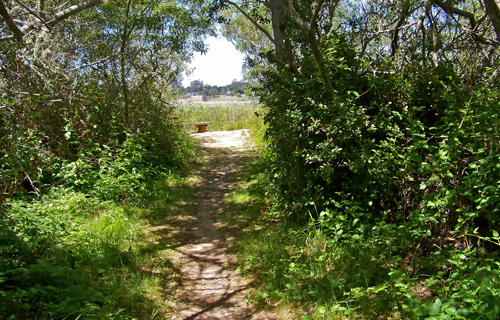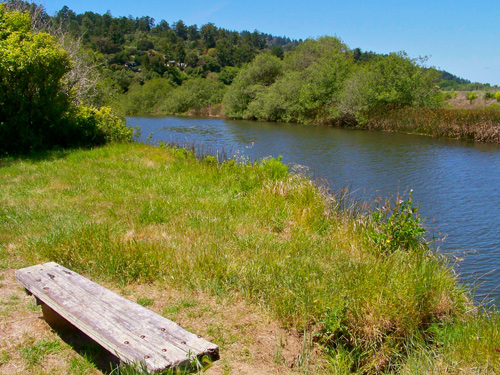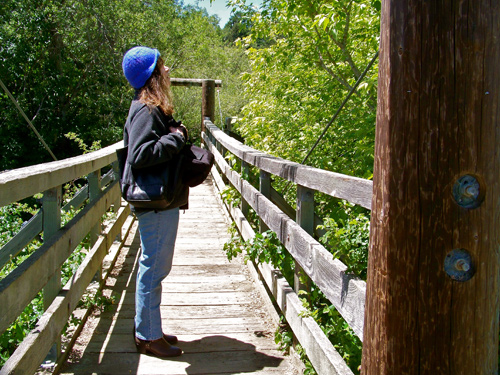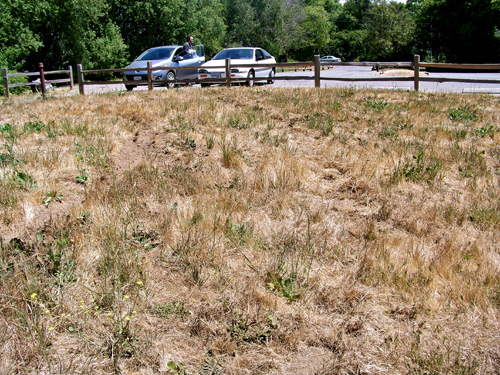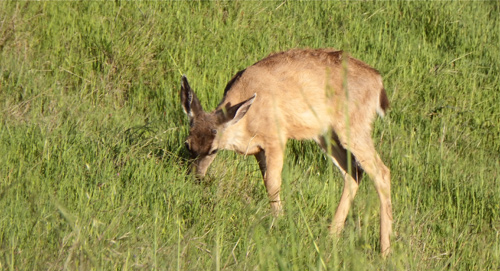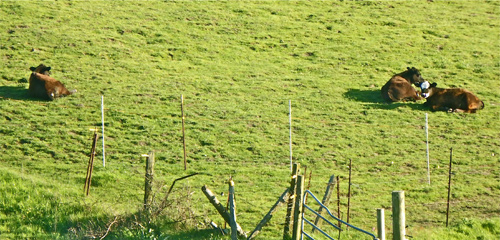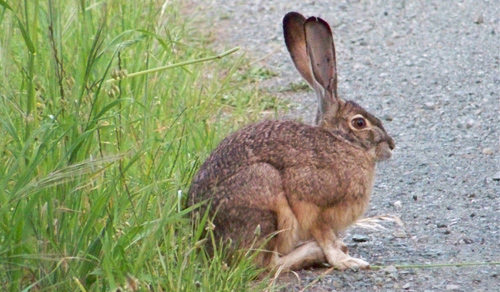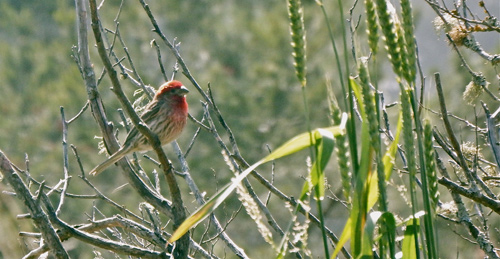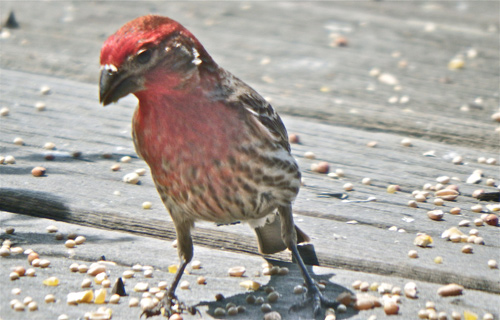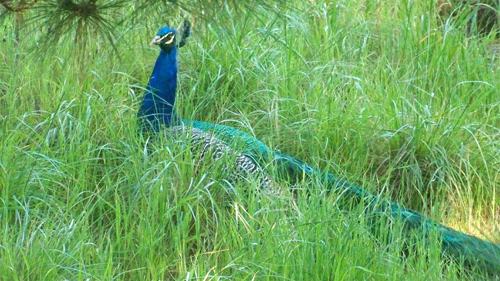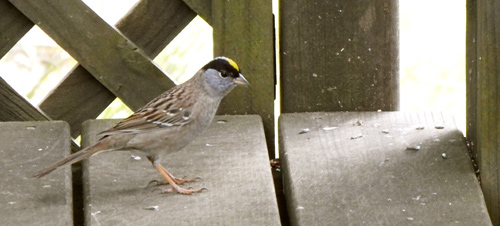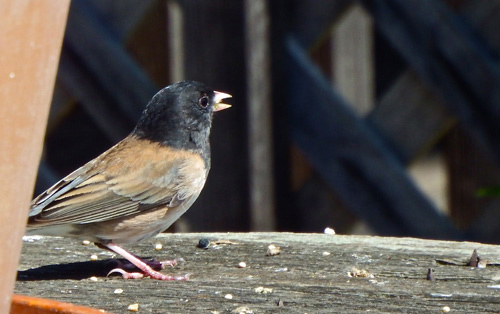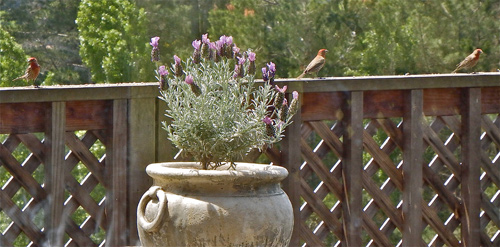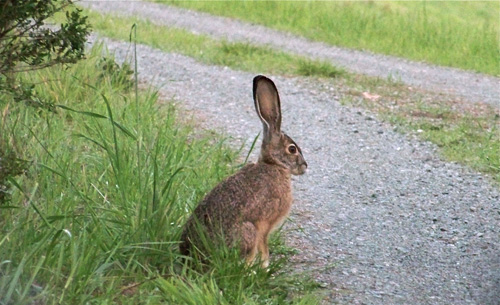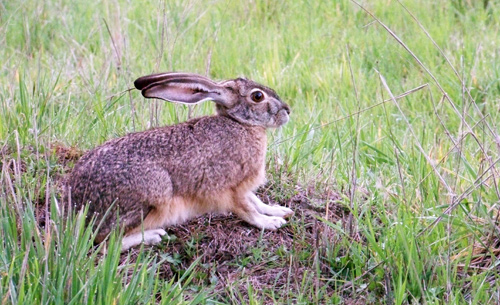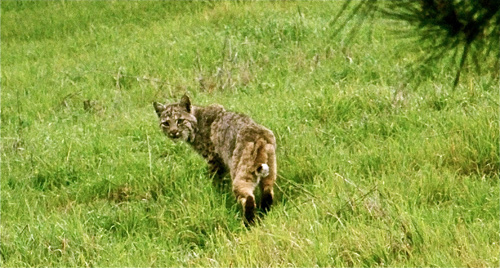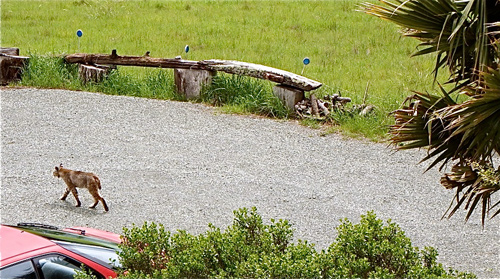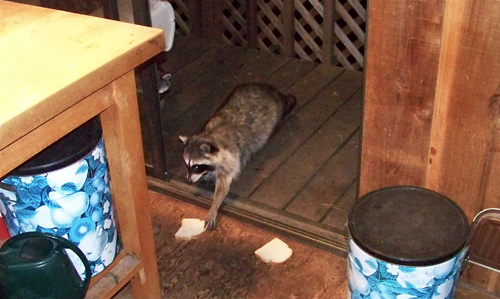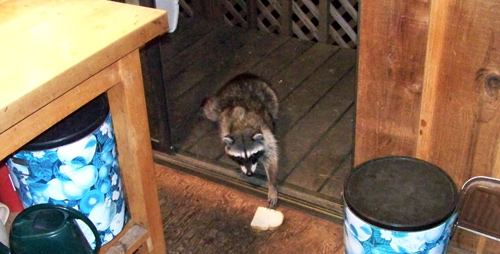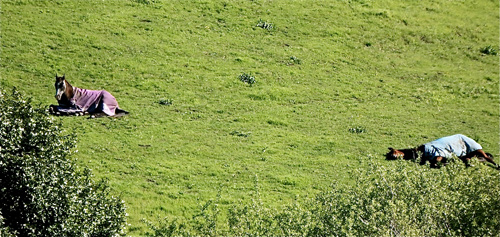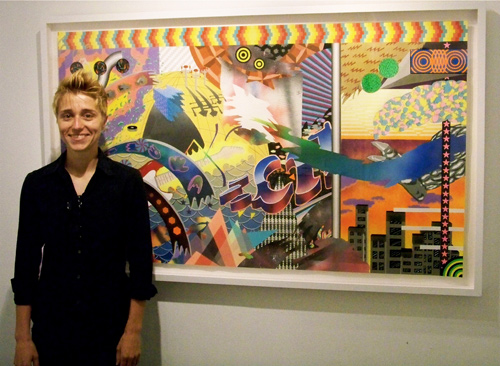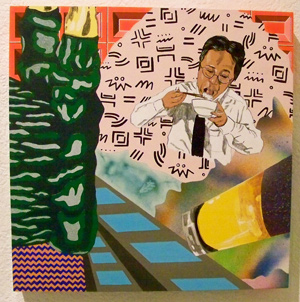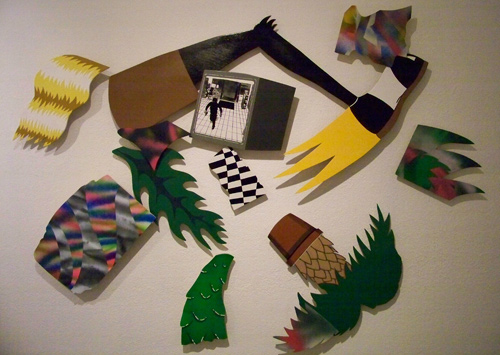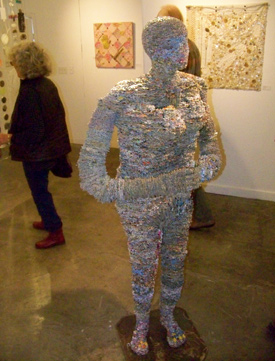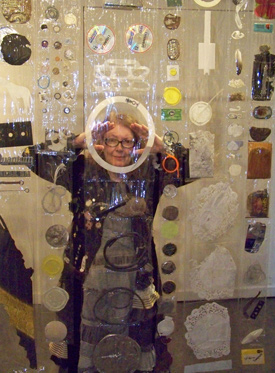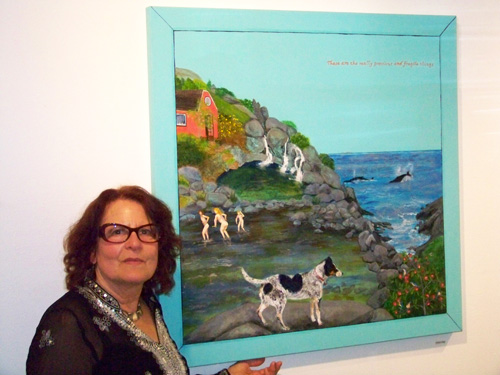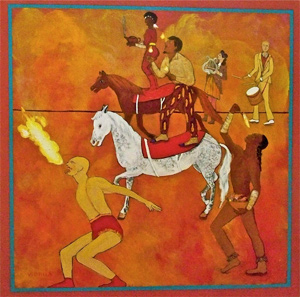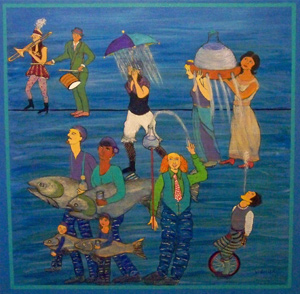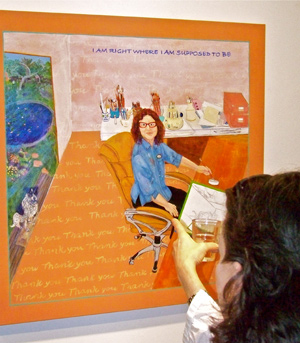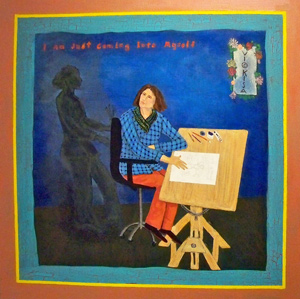Inverness’ Jack Mason Museum of West Marin History held a well-attended opening reception Sunday for Picturing the Point Reyes Peninsula, “an exhibit of historical photographs of people, places, and events in Olema, Point Reyes Station and Inverness from 1869 to 1960.”
The exhibit provides fascinating glimpses into life at the foot of Tomales Bay and on Point Reyes a century ago. The photos are mostly from the museum’s own collection although a few are from the archives of the Park Service and other institutions.
The images on display were originally assembled by Carola DeRooy for a 2008 book titled Point Reyes Peninsula.
 The book’s coauthor was Dewey Livingston, historian for the Jack Mason Museum. His role was to provide the book’s text, he told me during the reception.
The book’s coauthor was Dewey Livingston, historian for the Jack Mason Museum. His role was to provide the book’s text, he told me during the reception.
Captions for photos in the exhibition were mostly taken directly from the book.
As it happens, I have long been curious about a mysterious line of rocks on Pierce Point (aka Toms Point), so I was pleased to see it getting attention in the exhibition.
“Today, hikers encounter this 820-foot-long row of granite stones (at right) about 1.5 miles along the Tomales Point Trail,” notes the photo’s caption.
“The boulders are aligned to Mount St. Helena in the east and run to the cliff edge, pointing toward the Farallon Islands in the west.
“They are named the Spirit Jumping-Off Rocks by the Coast Miwok tribe who believe when a person dies, their spirit walks west.
“The rock line is man-made and appears on an 1862 Coast Survey map. However, who built the wall, for what purpose and when, still remains uncertain.” ________________________________________________________________________
 Mexican Land Grantee. “In 1836,” according to the caption, “Rafael Garcia (right) received Rancho Tomales y Baulenes, some 9,468 acres from the slopes of Tamalpais to Tomales Bay, as a reward for halting Native American rebellions at the mission [San Rafael Arcángel].
Mexican Land Grantee. “In 1836,” according to the caption, “Rafael Garcia (right) received Rancho Tomales y Baulenes, some 9,468 acres from the slopes of Tamalpais to Tomales Bay, as a reward for halting Native American rebellions at the mission [San Rafael Arcángel].
“The first Mexican land grantee on Point Reyes, Garcia moved to Olema, where he built a well-appointed adobe house for his large family.
“This sketch of the widely know patriarch Don Rafael was drawn by a Russian naturalist, I.G. Voznesenskii, on a visit to the rancho in 1845.” (Marin History Museum photo)
Olema was in its heyday during the 1860s and 1870s. Back then it had two hotels, a general store, six bars, bi-weekly stagecoach service to San Rafael, and weekly steamer service to San Francisco via Tomales Bay. __________________________________________________________________________

“Olema’s fine schoolhouse, with meeting hall upstairs, was named Garcia School after the original resident of the area. The schoolhouse, located on the lane to the Shafter Ranch, burned and was replaced in a different location in 1915.”

“The arrival of the North Pacific Coast Railroad in 1875 signaled the end of Olema’s growth and heyday. The narrow-gauge rail line originated in Sausalito (where ferries connected to San Francisco) and headed north via San Anselmo, San Geronimo Valley, and Tomales Bay,” the photo’s caption explained.
“The destination was the rich redwood timber of the Russian River area. Bypassing Olema through a trick of geography, the tracks met at the head of Tomales Bay at a wide, flat pasture two miles from town.”
Point Reyes Station had not existed before the railroad erected a depot in the pasture, but the town that quickly sprung up around the depot soon overshadowed Olema commercially. (Seen above) a train crosses an S-shaped trestle over Papermill Creek as it enters Point Reyes Station from the east.

“Train passengers could be met by a stage at Point Reyes Station and transported to the numerous attractions of the area. Here a group of women and their male companion have chosen bicycles as their mode of exploring Point Reyes.”

“Real estate agents attracted potential buyers to Inverness beginning in 1889 with camping trips and promises of a grand hotel.
“City people enjoyed setting up their tents on potential building lots, and a few actually bought; but Inverness was slow to take off. By the 1920s, it had established its reputation as a cozy summer resort, scattered with quaint cabins but sans first-class hotel.
 However, “not all Inverness families were summer residents from the cities.
However, “not all Inverness families were summer residents from the cities.
“True locals included those who provided services, [such as] carpenters, plumbers, stonemasons, shopkeepers, and the Hom family, operators of the local laundry.
“The Homs raised a large family in Inverness, and many of the kids ended up going to a university or into successful trades.”
One of the Hom girls changed her name to Tong and became a “fan dancer” in San Francisco, Meg Linden from the museum told me Sunday. _________________________________________________________________________
 Shipwreck. “Heavy fogs, dangerous surf, and the jutting and rocky Point Reyes headland itself posed hazards for the coastal sea captain during the 19th century.
Shipwreck. “Heavy fogs, dangerous surf, and the jutting and rocky Point Reyes headland itself posed hazards for the coastal sea captain during the 19th century.
“Dozens of ships went aground at Point Reyes, often in a dramatic fashion, while few lives were lost.
“The coastal steamer Samoa went aground at Ten Mile Beach in 1913, prompting a dramatic rescue by men at the nearby Life-Saving Station.
“The wreck drew curious visitors for many days until the ship broke up; the bow of the ship made an interesting landmark for many years before disappearing into the sand.” _________________________________________________________________________

“The US Coast Guard superseded the Life-Saving Service in 1915, and in 1927, an entirely new Point Reyes Lifeboat Station was built at a sheltered spot in Drakes Bay. The handsome boathouse-and-barracks building was constructed on pilings and features a marine railway from which heavier, motor-driven lifeboats could be launched.” (Point Reyes National Seashore Archives photo)

“This aerial view shows the entire Point Reyes Lifeboat Station, now a National Historic Landmark, and the neighboring commercial fish docks. At the bottom is the boathouse and in the trees near the center are the officer-in-charge’s house and auxiliary buildings.
“A radio tower, surrounded by a circular fence, is at the far left, and the barge in the foreground is the Navy paint-test barge, on which marine paints were tested.” _________________________________________________________________________
 Point Reyes Lighthouse. “The handsome yet functional light tower was constructed of iron plats bolted and riveted together, all secured into the solid rock-and-concrete foundation 273 feet above the crashing surf.
Point Reyes Lighthouse. “The handsome yet functional light tower was constructed of iron plats bolted and riveted together, all secured into the solid rock-and-concrete foundation 273 feet above the crashing surf.
“Inside the delicate-looking lantern room, an intricately assembled Fresnel lens was mounted on a meticulously balanced circular track.
“The entire First-Order lens and lamp assembly turned at a carefully geared pace to produce a flash every five seconds.
“Famed pioneer photographer Eadweard Muybridge took this photo of the newly constructed lighthouse in 1870 or 1871.”

Before the advent of refrigerated cargo, fresh milk from Point Reyes could spoil if it were shipped to San Francisco. Instead, the cream was skimmed off and churned into butter, which could be shipped without refrigeration.
“‘Modern technology‘ of the late 1880s brought the DeLaval separator, which skimmed cream instantly. Ranchers fed the skim milk to pigs, which provided a supplemental income.
“This photograph shows the Claussen dairy at E Ranch [on Point Reyes], where Henry Claussen (right) and his butter maker John Paulino show off the separator [and] the steam engine. The large churn is out of the picture on the right.”

“Point Reyes Station’s first school was built in 1879 on the hill above town. Named after the pioneer owner of the property on which the town school stood, the Black School District’s classroom soon overflowed as the town grew. This class included the children of dairy ranchers, rail workers, and merchants.”

“A fine new school, also called Black School, was built in 1905 on a flat lot in town. The impressive architecture illustrated the town’s prospects at the time.
“The 1906 earthquake damaged the schoolhouse but not until the 1950s was the venerable institution replaced by the modern West Marin Elementary School, located opposite the pioneer schoolhouse up the hill.”
This building, which no longer exists, was located on the site of the today’s firehouse. _____________________________________________________________________
 “Bear Valley ranch owner Gene Compton, owner of a San Francisco cafeteria chain, opened his central pasture to the public for a fully accredited western-style rodeo in 1946-1948.
“Bear Valley ranch owner Gene Compton, owner of a San Francisco cafeteria chain, opened his central pasture to the public for a fully accredited western-style rodeo in 1946-1948.
“Local cowboys joined professional circuit riders to the benefit of local charities.
“The new local newspaper, Baywood Press, covered the event,” the photo caption notes.
The Baywood Press, which was founded on March 1, 1948, changed its name to Point Reyes Light in 1966.
The photos here are only a sampling of what the exhibition contains, and the exhibit itself is basically a sampling of the many historic photos in Point Reyes Peninsula. The 128-page book is available from Arcadia Publishing for $21.99.
Tags: Baywood Press, Bear Valley ranch, Black School District, Carola DeRooy, Dewey Livingston, E Ranch, Garcia School, Gene Compton, Henry Claussen, John Paulino, Point Reyes Lifeboat Station, Point Reyes Lighthouse, Rafael Garcia, Tomales y Baulenes land grant, wreck of the steamer Samoa











